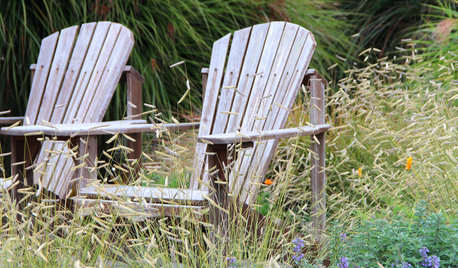Viable Seeds
Gregory Eleser
18 years ago
Related Stories

ROCKY MOUNTAINS GARDENINGRocky Mountain Gardener's February Checklist
Get smart with your seeds, strike with oil to manage pests and practice proficient pruning — your trees and shrubs will thank you
Full Story0

FALL GARDENINGBe Your Own Wildflower Nursery
Gather seeds from your garden in fall, and you'll have a selection of plants for next year — without spending a dime
Full Story
FLOWERS8 Knockout Flowers for a Fall Container Garden
Your cups will overfloweth with color and interest this fall when you plant these vivid seasonal garden classics
Full Story
GARDENING GUIDES10 Ornamental Grasses to Plant This Fall
Add interest to your garden with these popular warm-season and cool-season varieties
Full Story
GARDENING GUIDESLet's Weed Out 4 Native Plant Myths
Plant wisely for a garden that supports pollinators and requires less work
Full Story
GARDENING GUIDESWe Bust 4 More Native Plant Myths
Have you been taken in by these fallacies about gardening with native plants?
Full Story
PLANTING IDEASWant a More Colorful, Natural Garden? Try a Perennial Meadow
Spend less time tending and more time taking in the sights by improving on Victorian and prairie garden designs
Full Story
GROUND COVERSGive Your Lawn a Taste of the Wild
Consider the joys of an irregularly trimmed meadow lawn: It’s ecofriendly, visually interesting and still good for romping
Full Story
GARDENING GUIDESDo You Have This Invasive Plant in Your Yard?
Garlic mustard is spreading across the U.S. Here’s how to spot it and what to do
Full Story






oldherb
Traci
Related Professionals
Beachwood Landscape Architects & Landscape Designers · Fort Lee Landscape Architects & Landscape Designers · Norton Shores Landscape Architects & Landscape Designers · Salem Landscape Contractors · Bergenfield Landscape Contractors · Blue Springs Landscape Contractors · Farmington Landscape Contractors · North Potomac Landscape Contractors · Oak Harbor Landscape Contractors · Oxnard Landscape Contractors · Weslaco Landscape Contractors · East Norriton Landscape Contractors · Tampa Roofing & Gutters · Marietta Roofing & Gutters · Weehawken Roofing & Guttersgalina
zeedman Zone 5 Wisconsin
zeedman Zone 5 Wisconsin